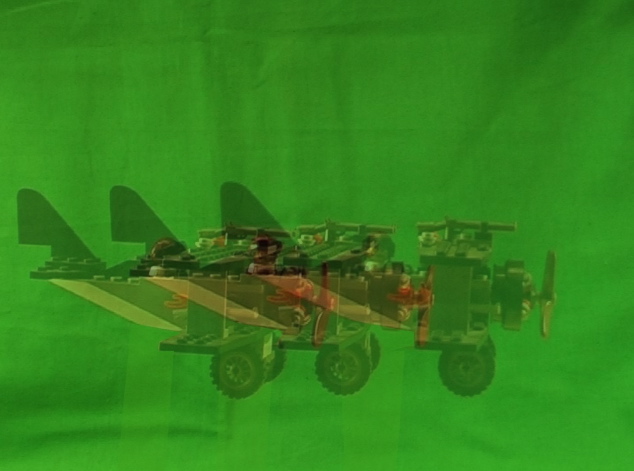Onion Skinning in I Can Animate

Onion Skinning in I Can Animate

I Can Animate allows you to choose to preview both the view from the camera and frames together. You will see the currently selected frame in the timeline and the feed from the video camera superimposed over each other. This technique is called onion skinning.
Onion skinning is a useful technique that allows you to view the progressive movement of an object, essential when trying to gauge the distance to move objects from one frame to another.
Each time you capture a new frame it is added to the end of the clip and the frame selection will advance so that the new frame will become part of the selection. The preview will now show both the feed from the camera and the selected frame although until you move the objects being animated you might not see the onion skinning effect.
A maximum of five frames including the feed from the camera may be onion skinned.
You can change the relative opacity of the camera to the selected frames by using the slider control below the View switches. This slider is only enabled when the view is set to Both.
You may also find this feature useful if you inadvertently move your model or camera, allowing you to reposition either with reasonable accuracy.
History of Onion Skinning
Onion skinning is a technique with roots that go back to the early 1920s when Disney animators would create each frame of their animations on different transparent sheets, or gels. These early animators came up with onion skinning as a way to ensure that these individual gels lined up properly to create a seamless animation.
The process starts with the first frame of the animation where the animator draws an outline of the animated character, to which no colour is added. A second gel is laid over the first. In the second gel, the animator re-draws the animation, but moves the character slightly into the position necessary for frame two of the animated sequence. The advantage of this process is that you can see the previous position of the animation you’re drawing through the transparent gels.
The process is repeated by adding additional gels, one on top of the other. Each gel is a frame of the animation. By holding the gels to the light they could see all of the positions of the animated character in one view.
When you create a flick book you are doing something very similar.
For Disney, onion skinning became a technique that allowed animators to see, in one view, all of the individual positions for an animation during a set of frames. This helped to ensure quality in animation for the early designers.

